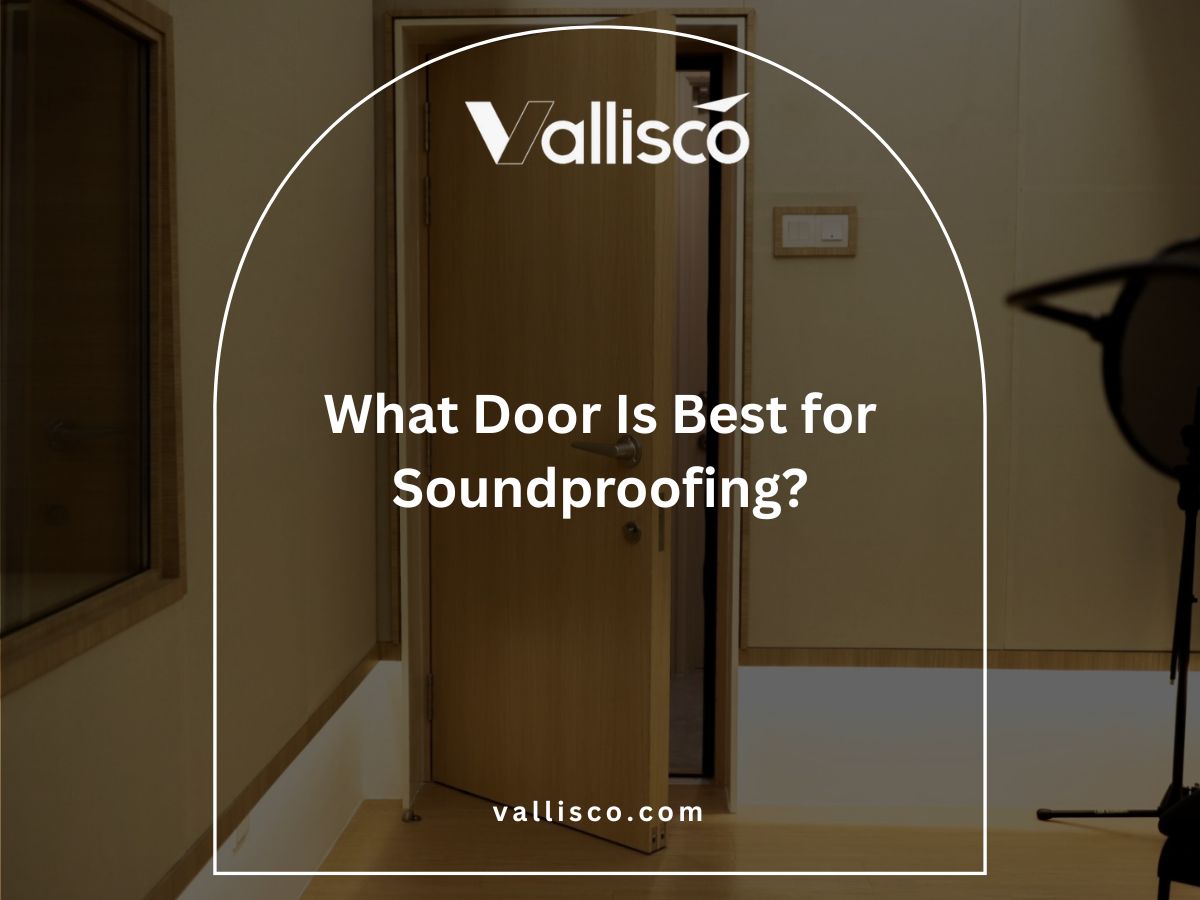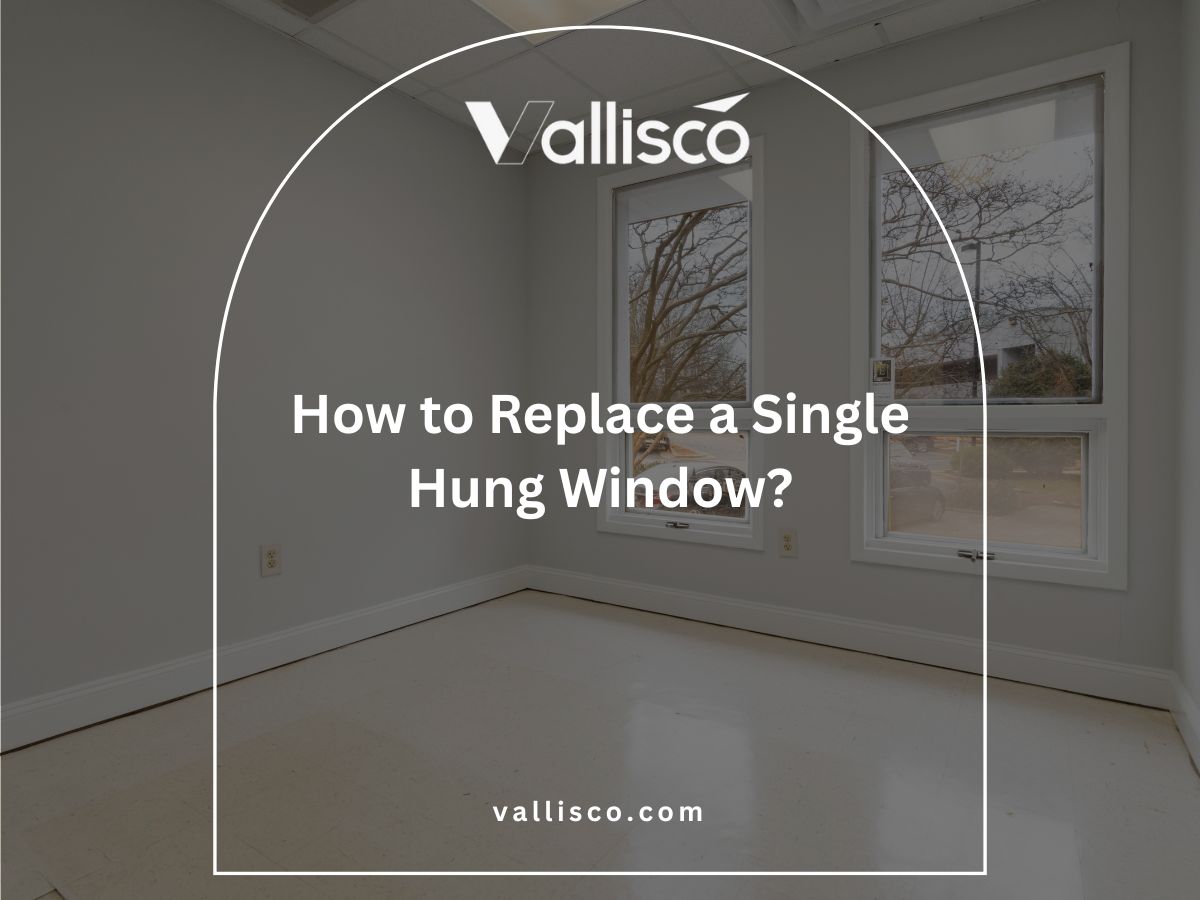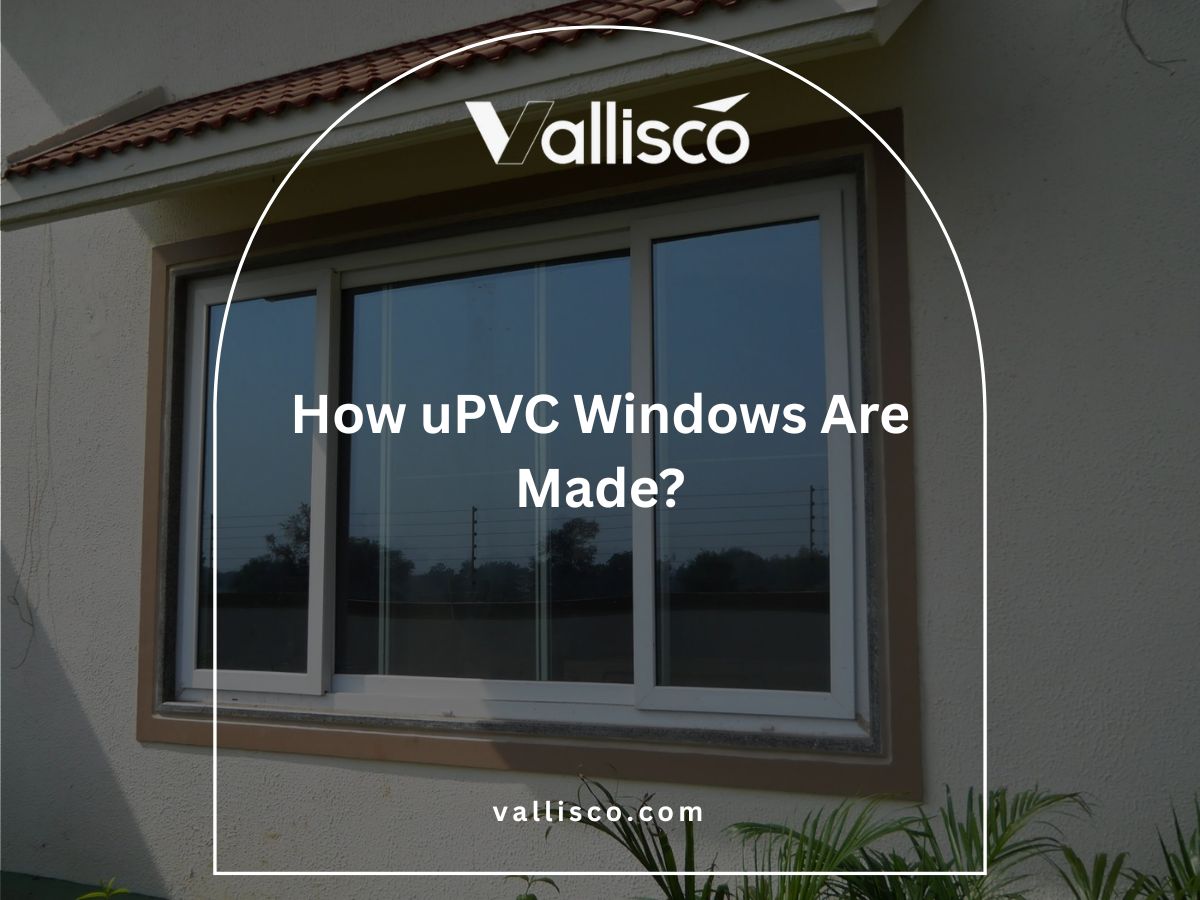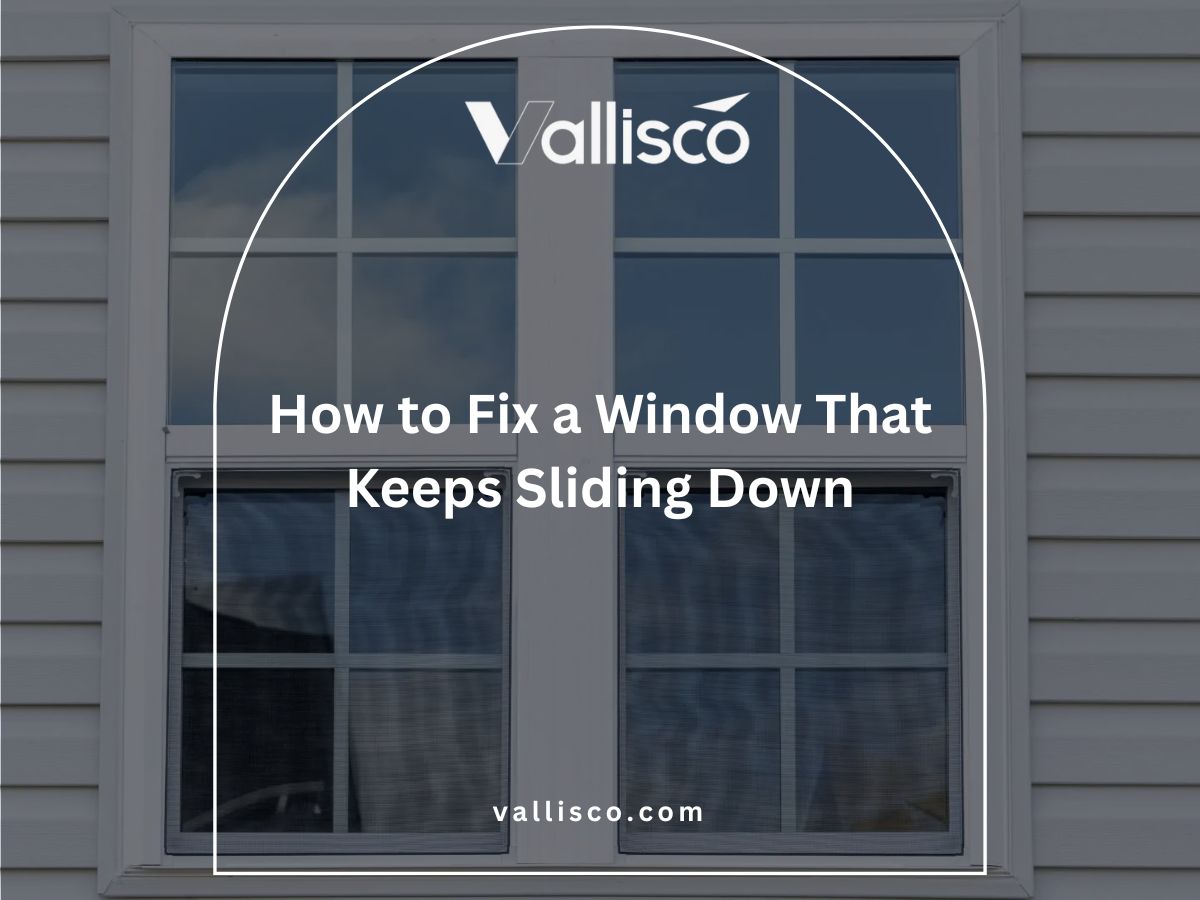I once helped a B&B owner swap out her old wooden windows. She loved how they looked until winter came and her heating bill shot up.
That moment made me realize something big: good-looking windows aren’t always good for business.
Since then, I’ve worked with hotel owners, villa builders, and engineers who ran into the same thing. They picked windows that didn’t hold up and had to fix the problem later. I’ve also seen what works and lasts.
In this guide, you’ll see 12 hotel window types. I’ll show you where each one fits best, what to watch out for, and how to make the smart choice.
Some windows just look nice. Others help your whole place feel right.
Let’s get started!
Quick Comparison Chart
Not sure which window does what? Here’s a quick side-by-side look to help you see the big picture before we dive into each option.
| Window Type | Key Benefits | Best For | Airflow Level | Design Impact | Ideal Placement |
| Fixed | Great insulation, unobstructed views | Views, light, insulation | None | High | Lobbies, stairwells, scenic walls |
| Double-Hung | Flexible ventilation, safer airflow | Safe airflow, traditional look | Moderate | Medium | Guest rooms, older buildings |
| Sliding | Easy to operate, space-saving | Space-saving, easy use | Moderate | Low–Medium | Balconies, guest rooms, warm climates |
| Casement | Strong seal, catches outside breeze | Strong ventilation, tight seal | High | Medium–High | Guest rooms, villas, breezy locations |
| Single-Hung | Affordable, easy to maintain | Budget rooms, simple design | Low | Low–Medium | Budget hotels, staff rooms |
| Awning | Ventilates during rain, keeps privacy | Moisture control, privacy | Low–Medium | Medium | Bathrooms, humid climates |
| Bay | Adds floor space, natural seating option | Extra space, visual appeal | Medium | High | Premium rooms, lounges, corner units |
| Picture | Brings in light, highlights the view | Scenic views, natural light | None | Very High | High-end rooms, lounges, dining areas |
| Hopper | Compact, safe in small spaces | Small spaces, privacy | Low | Low | Bathrooms, basements, utility rooms |
| Pivot | Modern look, even airflow on both sides | Modern design, flexible airflow | Medium–High | High | Contemporary rooms, spa areas |
| Transom | Adds daylight without losing privacy | Daylight with privacy | Very Low | Low–Medium | Above doors, hallways, spa areas |
| Skylights | Overhead light, saves wall space | Light from above | Low–Medium | High | Top-floor rooms, spas, windowless areas |
Let’s explore each type more closely so you can make the right call for your needs.
1. Fixed Windows: Best for Views and Lower Maintenance
I once helped a villa owner install a large fixed window facing the hills. The view was incredible, but the room ended up feeling hot and stuffy because there was no airflow. That’s when I saw how form without function can hurt the guest experience. Fixed windows look clean and modern, but they don’t open so you have to use them wisely.
Where This Window Works Best
You’ll want to use fixed windows in areas where ventilation isn’t needed. These are great when you’re designing for light, style, or scenery.
- Lobby or Lounge Areas: These windows bring in natural light and make your space feel open and relaxing. Guests often remember the view more than the furniture.
- Stairwells and Hallways: Fixed windows brighten up transitional areas without the need for fresh air. They’re a smart choice where windows are out of reach.
- Luxury Suites with Scenic Views: They work well in upper-floor rooms where the focus is on landscape or skyline. You don’t need ventilation there just a clear view.
- Spa or Courtyard Walls: These windows can act as a visual bridge between indoor and outdoor zones. They let in calming light and give the space a more open feel.
Key Things to Know Before You Choose
Fixed windows are simple in function but still come with important planning points.
- No Ventilation: Since the window doesn’t open, it can’t let in fresh air. You’ll need to rely on other windows or a mechanical system for airflow.
- Better Insulation: Because they stay shut, fixed windows seal tighter than ones that open. That means less air escapes, which helps with temperature control.
- Cleaning Access: The outside glass can be hard to reach and clean, especially on higher floors. You might need extra equipment or exterior maintenance plans.
- Can Be Combined with Operable Windows: Fixed windows are often paired with windows that do open. This gives you both airflow and great views in one setup.
If you’re building in a scenic area, fixed windows can really highlight the location. But they need to be used with intention.
Final Thought
Fixed windows add beauty and light, but they don’t give you airflow. However, you can use them where the view matters most, and pair them with other windows that offer ventilation.
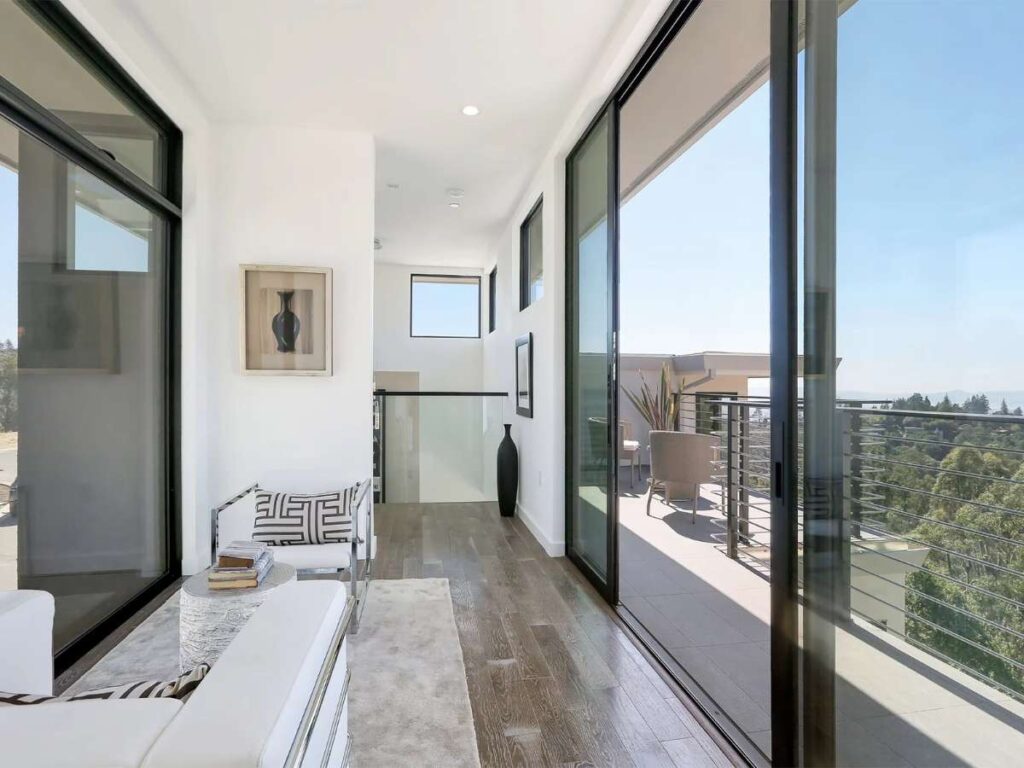
2. Double-Hung Windows: Easy to Clean and Control Airflow
I stayed at a countryside inn where the old double-hung windows worked better than I expected. I opened the top sash to let in fresh air without touching the bottom, and it made the room feel safe and comfortable.
This type has two sliding parts top and bottom so you can adjust airflow while keeping the room secure. It’s a simple design that works well in many hotels, especially where safety and ventilation matter.
Where This Window Works Best
This window type fits best in spaces where airflow and safety both matter. It’s also a favorite for projects with a more traditional design style.
- Guest Rooms in Family-Friendly Properties: You can open the top sash while keeping the bottom one locked. This is helpful for keeping children safe while still letting in air.
- Historic Hotels or Boutique Inns: These windows match older architecture and keep the charm intact. You won’t have to change the building’s character to improve ventilation.
- Second-Floor or Upper-Level Rooms: Cleaning both sides of the glass is easier from inside. The sashes often tilt inward for maintenance.
Key Things to Know Before You Choose
There are a few features you should think about before picking this window type.
- Two Movable Parts: You can open either the top or the bottom sash. This gives you more airflow control than single-hung windows.
- Safe for Kids and Pets: Opening the top only keeps the bottom closed. It’s a good way to allow ventilation without risk.
- Requires Regular Maintenance: More moving parts means more chances for wear. Locks, balances, and tracks need occasional attention.
- Good for Balanced Ventilation: Warm air can escape through the top while cooler air enters from below. This helps maintain indoor comfort naturally.
Final Thought
Double-hung windows offer control, comfort, and safety without overcomplicating the design. However, the extra moving parts mean you’ll need to keep up with regular checks to keep them working smoothly.
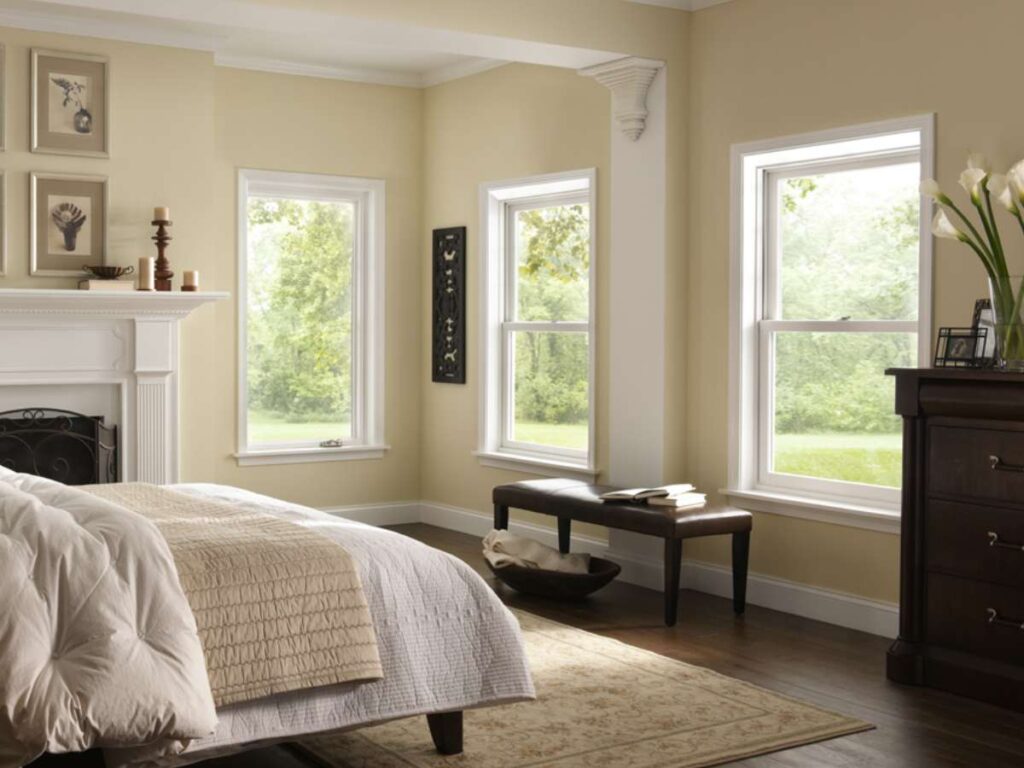
3. Sliding Windows: Simple, Space-Saving, and Guest-Friendly
On one hotel project near the coast, sliding windows turned out to be one of the most appreciated features by guests. People liked how easy they were to open, especially when walking out to a balcony or letting in fresh air without rearranging the room. A sliding window has one panel that moves sideways over another, making it a great choice for tight spaces or areas where a swinging window would get in the way.
Where This Window Works Best
Sliding windows are a good fit for modern properties that need functional design without getting in the way. They’re especially useful in tight spaces or places with walkways outside.
- Guest Rooms with Balconies or Patios: The sliding panel keeps the window from swinging into furniture or foot traffic. Guests can enjoy the view and breeze without adjusting anything around them.
- Mid- to Low-Rise Hotels in Warm Climates: These windows open wide enough for airflow but don’t block walkways. They work well in areas where insulation isn’t a top concern.
- Bathrooms or Kitchenettes: They give just enough ventilation without taking up space. The simple design makes them easy to clean and maintain.
Key Things to Know Before You Choose
Sliding windows are user-friendly, but they come with trade-offs you should consider.
- Space-Saving Design: Because they slide instead of swing, they’re great where space is limited. This includes guest rooms, corridors, and balconies.
- Fewer Moving Parts: With no hinges or cranks, they’re easier to install and maintain. That can help reduce long-term upkeep.
- May Offer Less Insulation: Sliding windows don’t always seal as tightly as fixed or casement types. You may need extra weather-stripping or curtains in colder areas.
- Can Be Harder to Clean from Outside: Only one panel usually slides, so reaching the exterior side of the fixed glass may take extra effort.
Final Thought
Sliding windows are simple and reliable, especially when space is tight and ease of use matters. However, they may not be the best option where strong insulation or full access for cleaning is a priority.

4. Casement Windows: Best for Fresh Air and a Tight Seal
In many projects, casement windows become the go-to choice when natural ventilation is a top priority. They open outward on side hinges, much like a door, and use a crank handle for smooth control. Because they open fully, they’re able to catch passing breezes better than most window types. This makes them a strong option for properties aiming to reduce mechanical cooling and give guests access to fresh air.
Where This Window Works Best
Casement windows are great for guest rooms, bathrooms, or smaller areas where fresh air matters. They work well in both modern and classic building styles.
- Guest Rooms in Mild or Windy Areas: These windows open fully and catch passing air more effectively than sliding or hung windows. They’re especially helpful in rooms that don’t get much cross-ventilation.
- Bathrooms or Smaller Private Spaces: Their tight seal helps reduce moisture leaks when closed. When opened, they clear out steam quickly.
- Villas, Cottages, or Standalone Units: The outward swing works best where there’s open space outside. It gives a more open feel while still sealing tightly when shut.
Key Things to Know Before You Choose
Casement windows are highly functional, but they do have design and usage limits.
- Opens with a Crank Handle: Guests can open it as wide or as little as they like. The handle is smooth to operate and doesn’t require much strength.
- Tight Seal When Closed: The frame presses firmly into place, which helps keep out drafts and moisture. This also improves energy efficiency in all seasons.
- Needs Outdoor Clearance: Since it swings outward, it isn’t ideal near tight walkways or high-traffic paths. Make sure the space outside the window is clear.
- Can Catch More Breeze: Compared to sliding windows, this style pulls in more air. That can make a noticeable difference in warm rooms.
Final Thought
Casement windows are a practical option for boosting airflow while keeping the room sealed and quiet. However, they work best in open areas where there’s enough space for the sash to swing out fully.

5. Single-Hung Windows: Simple and Budget-Friendly
When planning for large-scale hotel builds or economy stays, single-hung windows often show up on the spec list. They look similar to double-hung windows but operate differently: only the bottom sash moves while the top stays fixed. That small difference helps lower costs, both upfront and over time, while still offering some airflow.
Where This Window Works Best
Single-hung windows are best used where basic airflow is needed and the design doesn’t call for full flexibility. They’re often chosen for cost-driven projects.
- Budget Hotels or Guesthouses: These windows are often more affordable than double-hung models. They offer a similar look but with fewer moving pieces.
- Hallways, Stairwells, or Back Rooms: Since the top doesn’t open, they’re fine for areas that don’t need strong ventilation. Light still gets in, and the bottom sash provides minimal airflow.
- Multistory Buildings with Repetitive Window Layouts: Having fewer movable parts can reduce maintenance over time. Staff won’t need to adjust top sashes across dozens of rooms.
Key Things to Know Before You Choose
This design is simple, but there are a few things worth knowing before you use it across your property.
- Fixed Top Sash: The top part stays in place. All airflow comes from the bottom, which can limit circulation.
- Lower Initial Cost: Fewer moving parts mean lower prices at purchase. It’s also cheaper to repair or replace if needed.
- Classic Appearance: They offer the same visual appeal as double-hung styles. Guests usually won’t notice the difference at a glance.
- Less Ventilation Control: With only one opening sash, you have fewer airflow options. This might not be ideal in warm, stuffy rooms.
Final Thought
Single-hung windows keep things simple while helping you stay on budget. However, they offer less flexibility in airflow, so they work best in spaces where that trade-off makes sense.

6. Awning Windows: Good for Ventilation, Even in the Rain
In humid or rainy areas, awning windows can solve a lot of problems. They’re hinged at the top and open outward from the bottom, forming a slanted panel. This design lets air in while keeping water out, even during light rain. If you’ve ever walked into a steamy guest bathroom or a warm hallway with no airflow, this style could make a big difference.
Where This Window Works Best
Awning windows are a smart fit for places that need fresh air but also deal with moisture. They work well in both small spaces and humid zones.
- Bathrooms and Laundry Areas: These windows help vent out steam or humidity without letting in rain. They’re also high enough on the wall to give privacy without covering them.
- Tropical or Rainy Climate Zones: Their shape allows them to stay open when it’s wet outside. That makes them a great choice for hotels or villas near the coast or in forested areas.
- Above Fixed or Larger Windows: Used in combination with bigger windows, they bring airflow into spaces that also need lots of light. You get the best of both without giving up wall space.
Key Things to Know Before You Choose
They’re functional and versatile, but they do have some limits worth noting.
- Top-Hinged Design: Opens from the bottom and tilts out. This shape protects the opening while still letting air move through.
- Strong Seal When Shut: The locking system presses tightly against the frame. This keeps out water and helps with temperature control.
- Limited View When Open: The window pane may block some of the outside view. That’s something to think about for rooms focused on scenery.
- Not Ideal Near Walkways: Since it swings outward, it could get in the way of paths or tight outdoor areas. Placement matters.
Final Thought
Awning windows work well in damp climates where ventilation is needed all year. However, their outward swing means they need the right location to stay both safe and practical.

7. Bay Windows: Add Space and Style to Guest Rooms
Bay windows do more than just bring in light. They create a little extra space that makes a room feel bigger and more open. A bay window is made by combining three or more windows that angle outward from the wall, forming a small bump-out area.
Whether it becomes a reading nook, a window seat, or just a design highlight, this type adds both function and charm to guest rooms.
Where This Window Works Best
Bay windows are best for guest-facing spaces where comfort, light, and design all matter. They work well in larger rooms that can benefit from a visual centerpiece.
- Premium or Corner Guest Rooms: A bay window makes the space feel more upscale. Guests may use it as a seat, storage area, or just a cozy corner to enjoy the view.
- Suites in Boutique Hotels or Villas: This style pairs well with custom layouts. It can help divide the room naturally without adding walls.
- Lobbies or Lounge Areas: Adds character and extra seating for guests. Natural light makes the space feel more relaxed and welcoming.
Key Things to Know Before You Choose
They offer visual impact, but bay windows also require careful planning and a bit more construction effort.
- Multiple Window Panels: Usually includes a fixed center and two angled side windows. The side units may open for airflow, while the center gives a wide view.
- Bump-Out Design: Extends beyond the exterior wall. This adds floor space, which can be used creatively in both public and private areas.
- More Glass Means More Light: These windows let in light from different angles. That can help brighten the room even on cloudy days.
- Needs Structural Support: The frame must hold extra weight. You may need to reinforce the wall or adjust your floor plan.
Final Thought
Bay windows bring charm, natural light, and added space to guest rooms, creating cozy nooks that guests often love. However, they take careful planning and may not suit every layout or budget. If you’re exploring custom solutions for a hotel or multi-unit property, Vallisco might be a helpful partner to speak with.
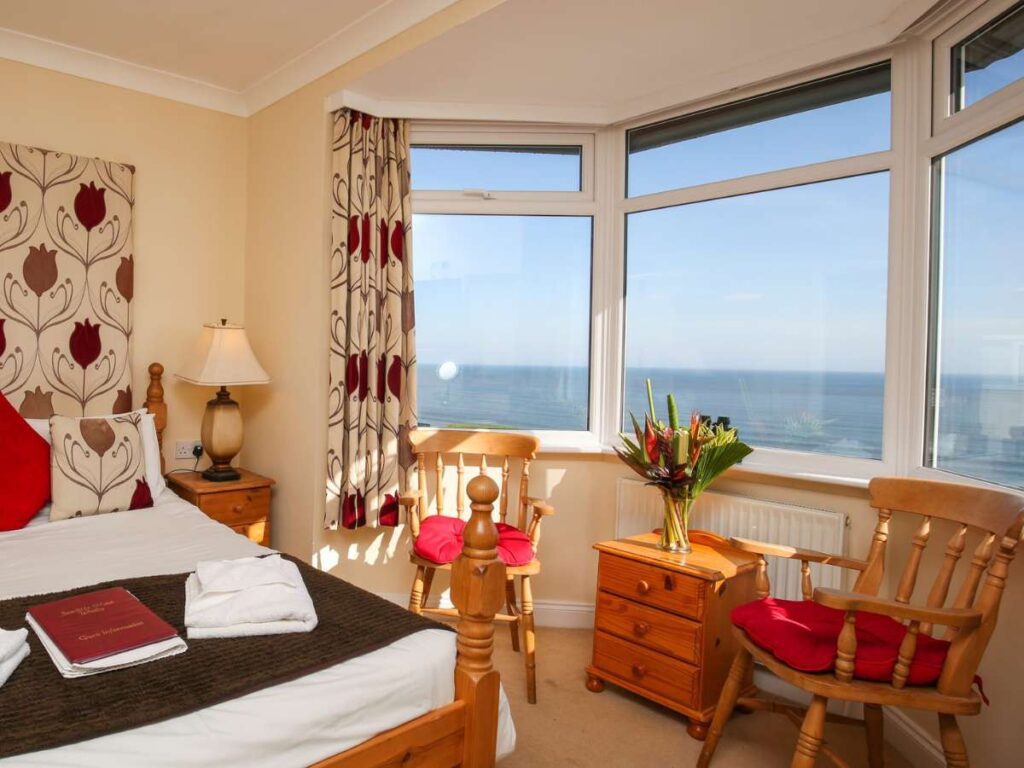
8. Picture Windows: Great for Scenic Views and Natural Light
When a room has a view worth showing off, picture windows help you make the most of it. These are large, fixed-pane windows that do not open but offer an uninterrupted view of the outside.
A picture window is designed purely for light and scenery. It creates a clear frame for the outdoors, which can make any space feel calmer, brighter, and more inviting to your guests.
Where This Window Works Best
Picture windows are perfect in spaces where natural light and outdoor views are key. They pair well with modern designs or wide, open layouts.
- Suites or High-End Guest Rooms: A large picture window adds a luxury feel. It draws attention to nature, cityscapes, or well-designed outdoor areas.
- Dining or Lounge Areas: Makes the space feel more open and relaxed. Guests often enjoy meals or quiet time more when the outside is part of the experience.
- Lobbies or Common Seating Areas: Brings light into shared spaces. Also makes waiting areas feel more spacious and welcoming.
Key Things to Know Before You Choose
They create visual impact, but you’ll want to think through ventilation and placement.
- Fixed Panel Design: Picture windows do not open. You’ll need other window types nearby if airflow is important.
- Strong Framing and Glass: Since the glass panel is large, proper sealing and structural support matter. Double or triple glazing may also be helpful for insulation.
- Brightens Dark Corners: Helps pull light into deeper parts of a room. Useful in long hallways, corners, or rooms with limited exterior walls.
- Needs Careful Placement: These windows frame a scene. If the view isn’t ideal, the window may end up working against the room instead of enhancing it.
Final Thought
Picture windows create a bold, open feel that your guests will remember. However, because they don’t open, it’s important to pair them with other window types that offer airflow and flexibility.
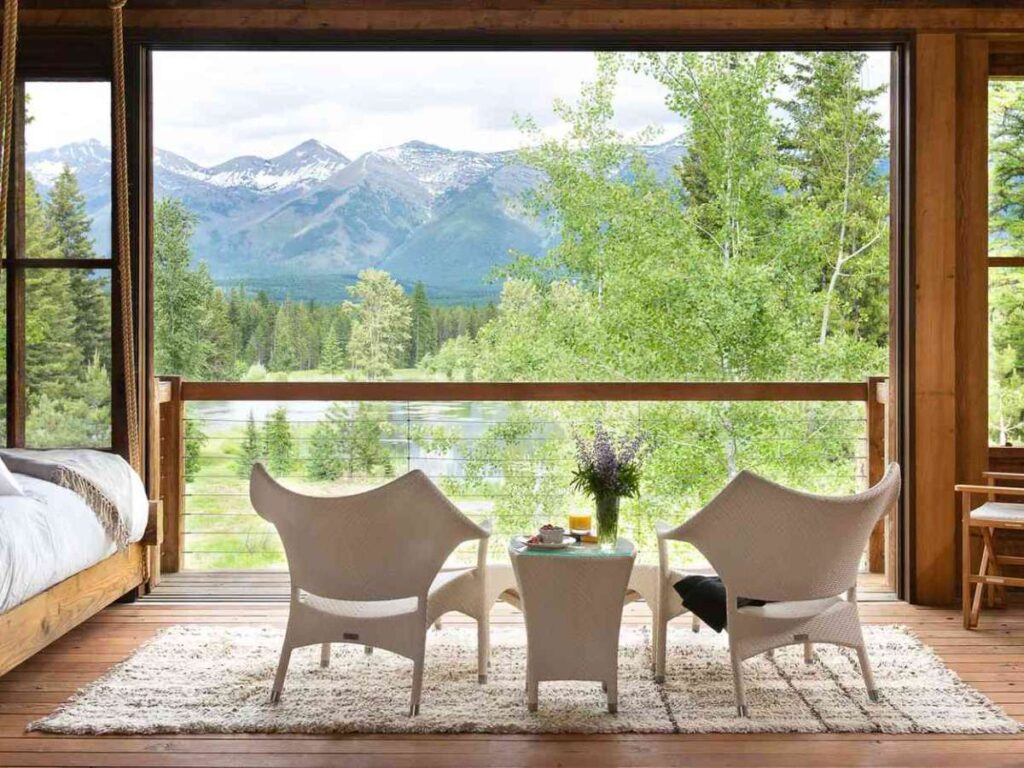
9. Hopper Windows: Small but Practical in Tight Spaces
Hopper windows are one of those designs you don’t think about much until you need them. They’re compact, easy to use, and made for places where larger windows won’t fit. A hopper window is hinged at the bottom and opens inward from the top. That inward tilt helps with airflow while keeping rain, dirt, or outside debris from blowing in.
Where This Window Works Best
These windows are great for areas where space is limited but some ventilation is still needed. They’re not the star of the room, but they play a helpful supporting role.
- Basements or Lower-Level Utility Rooms: Hopper windows bring in fresh air without taking up wall space. They help reduce dampness in spots that tend to feel closed off.
- Bathrooms and Laundry Rooms: Their compact size makes them a smart fit above sinks or washers. The inward swing also keeps the glass easy to reach and clean.
- Back-of-House or Staff Areas: They work well where ventilation matters more than looks. These rooms usually don’t need a view, just light and airflow.
Key Things to Know Before You Choose
Hopper windows are functional, but their smaller size means they come with a few trade-offs.
- Bottom-Hinged Design: The sash tilts inward from the top. That makes them easy to clean and safer to leave slightly open when needed.
- Limited Light and View: These windows are designed more for airflow than scenery. They won’t brighten a room like a larger window would.
- Better Security: Because of their small size and inward swing, they’re harder to access from the outside. That makes them a smart option in areas with privacy concerns.
- Needs Wall Height Clearance: Since the sash swings inward, avoid placing them above anything that blocks the swing. That includes cabinets, shelves, or deep counters.
Final Thought
Hopper windows are a simple way to get ventilation into tight or low-traffic areas. However, they’re not ideal where views or daylight are a top priority.
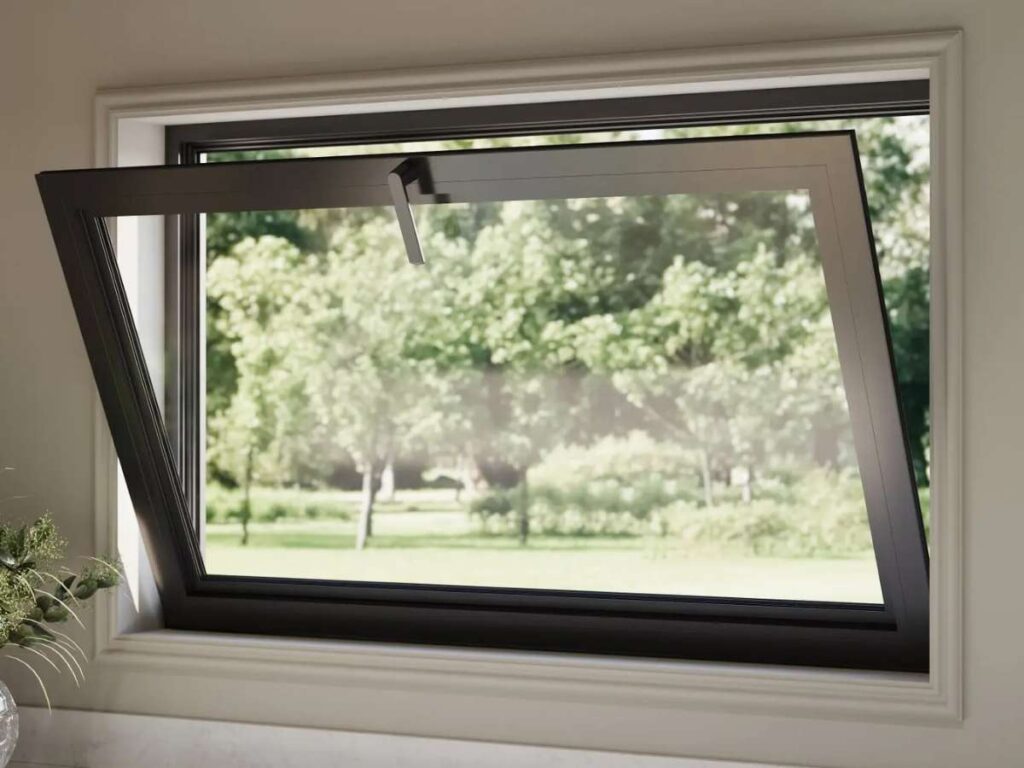
10. Pivot Windows: A Modern Look with Flexible Airflow
Some windows stand out because of how they look. Pivot windows are one of those types. A pivot window turns on a central hinge and can rotate either vertically or horizontally. Instead of swinging from the side or sliding open, it spins in place, giving you a modern design and smooth airflow at the same time.
Where This Window Works Best
Pivot windows work well in properties where style and function both matter. They bring in air and create a unique focal point.
- Modern Hotel Suites or Villas: The clean, sleek design adds a high-end touch. It’s often used in places where the window itself becomes part of the room’s look.
- Bathrooms or Small Utility Rooms: A small pivot window allows airflow and easy access. Because it turns inside the frame, it won’t take up space when opened.
- Glass Walls or Design-Focused Areas: Larger pivot windows can act like movable glass panels. They offer full views with a clever way to ventilate the room.
Key Things to Know Before You Choose
They may look stylish, but pivot windows do come with specific design needs.
- Center Hinge Rotation: The window rotates around its middle point. You can open it partially or fully to direct airflow in different ways.
- Eye-Catching Style: These windows feel unique and modern. They’re often used in boutique hotels or upscale properties that want a different look.
- Cleaning May Take Extra Planning: Depending on the size and swing direction, cleaning both sides could require custom access. This matters for higher placements or larger panes.
- Needs Space Around It: Since the window swings through its center, the inside and outside both need clearance. You’ll want to avoid placing furniture or walkways too close.
Final Thought
Pivot windows are a bold design choice that also offers great airflow control. However, they require careful planning to avoid clearance or maintenance issues down the line.
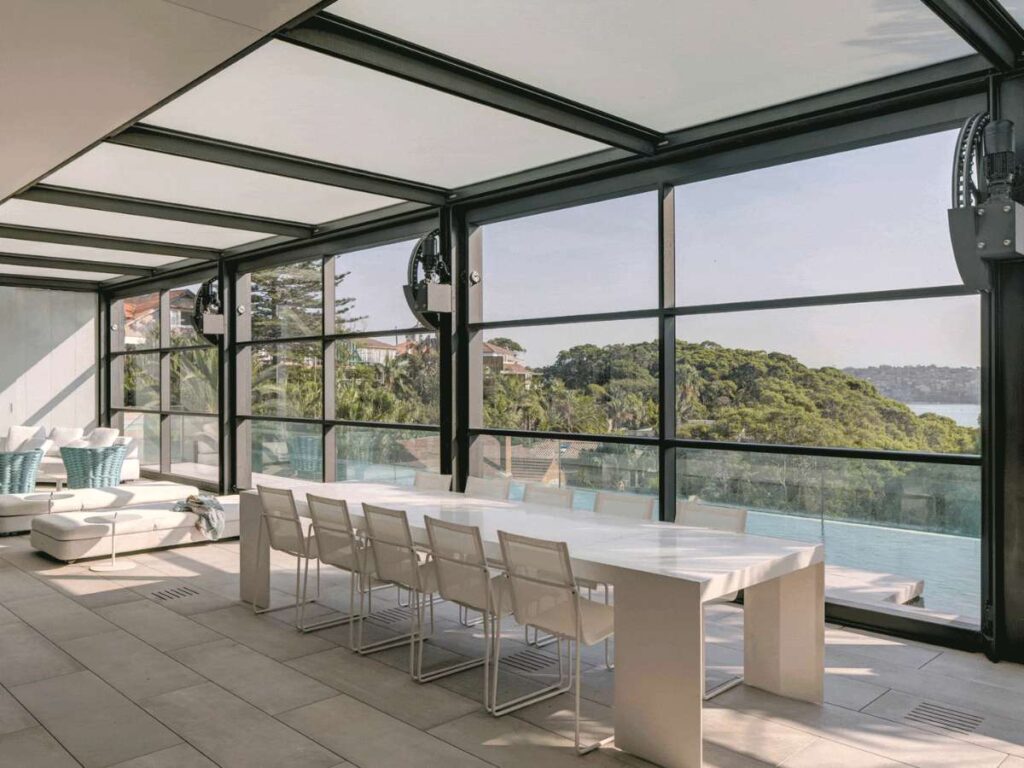
11. Transom Windows: Add Light Without Losing Privacy
Transom windows are often used in hotels without guests even realizing it. They sit high above doors or larger windows and are designed to let in light without sacrificing privacy. A transom window is typically small and horizontal, and it may be fixed or operable depending on its purpose. While they might seem like a small detail, these windows can completely change how a space feels especially in narrow, dark, or closed-off areas.
Where This Window Works Best
Transom windows are best used where extra daylight is needed but privacy or wall space must be preserved. They’re commonly added in interior or transitional areas.
- Above Guest Room Doors or Interior Walls: They brighten up narrow hallways or shared areas. This helps guests feel more at ease and less boxed in.
- Bathrooms or Spa Spaces: Placed high on the wall, they let in daylight without exposing the room. A fixed design keeps the area secure and quiet.
- Lobbies, Corridors, or Entry Points: When installed above glass doors or reception windows, they add elegance. They also allow natural light to spread further into the building.
Key Things to Know Before You Choose
These windows are subtle, but they still need thoughtful placement and sizing.
- Fixed or Operable Options: Some transom windows open to let air pass through. Others stay sealed and simply add light.
- Helps with Light Layering: These windows help light travel from room to room. They reduce the need for overhead lights during the day.
- Limited View and Airflow: Their small size limits how much air or scenery they offer. Use them with other windows when airflow is important.
- Works Well with Other Window Types: You can pair transoms with larger windows or glass doors. Together, they balance light, style, and function.
Final Thought
Transom windows are an easy way to bring in light while keeping spaces private and calm. However, their small size means they’re best used alongside other window types for full ventilation and views.
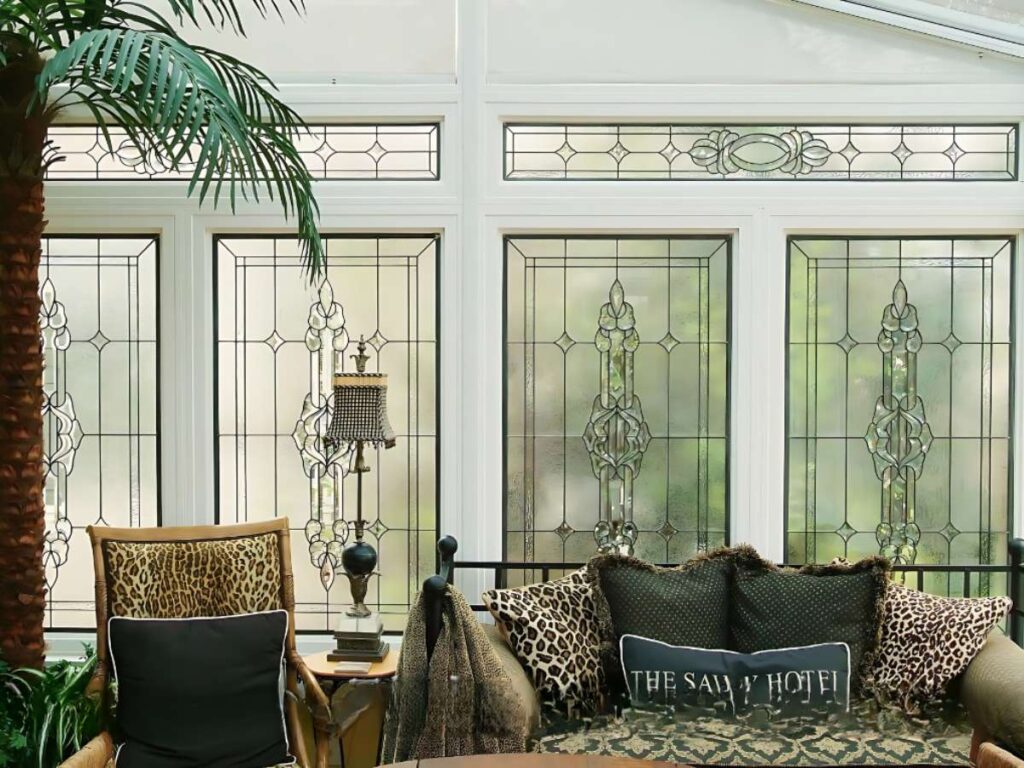
12. Skylights: Brighten Dark Rooms from Above
Sometimes windows on the wall aren’t enough. That’s when skylights can really help. A skylight is a window installed in the ceiling or roof, allowing natural light to pour in from above. It changes the feel of a room, making tight or dim spaces feel open, bright, and more welcoming without taking up valuable wall space.
Where This Window Works Best
Skylights work best in top-floor rooms or areas that feel dark during the day. They’re often used to highlight special spaces or improve guest comfort in low-light zones.
- Top-Floor Guest Rooms or Lofts: Skylights bring in soft daylight without giving up privacy. They’re especially nice in spaces where you want quiet and calm.
- Spa or Lounge Areas: Light from above makes these places feel peaceful. Guests often respond well to the natural light, even when the weather is cloudy.
- Interior Bathrooms or Hallways: These areas often have no exterior walls. Skylights offer a creative way to let in sunlight and reduce the need for artificial lighting.
Key Things to Know Before You Choose
Skylights offer a unique feel, but they also need smart planning and proper installation.
- Fixed or Venting Models: Some skylights open to release heat or moisture. Others are sealed and only used for light.
- Brightens Without Losing Wall Space: Because they go in the ceiling, you don’t lose privacy or furniture placement. This gives you more flexibility in design.
- Heat Gain and Glare: In hot climates or direct sun, these windows can add unwanted warmth. Consider tinted or treated glass to help with this.
- Roof Slope and Drainage Matter: Placement and waterproofing are key. A poor installation can lead to leaks or mold issues down the line.
Final Thought
Skylights can turn dark corners into beautiful, sunlit spaces your guests will remember. However, they require the right materials and location to avoid problems with heat or water.
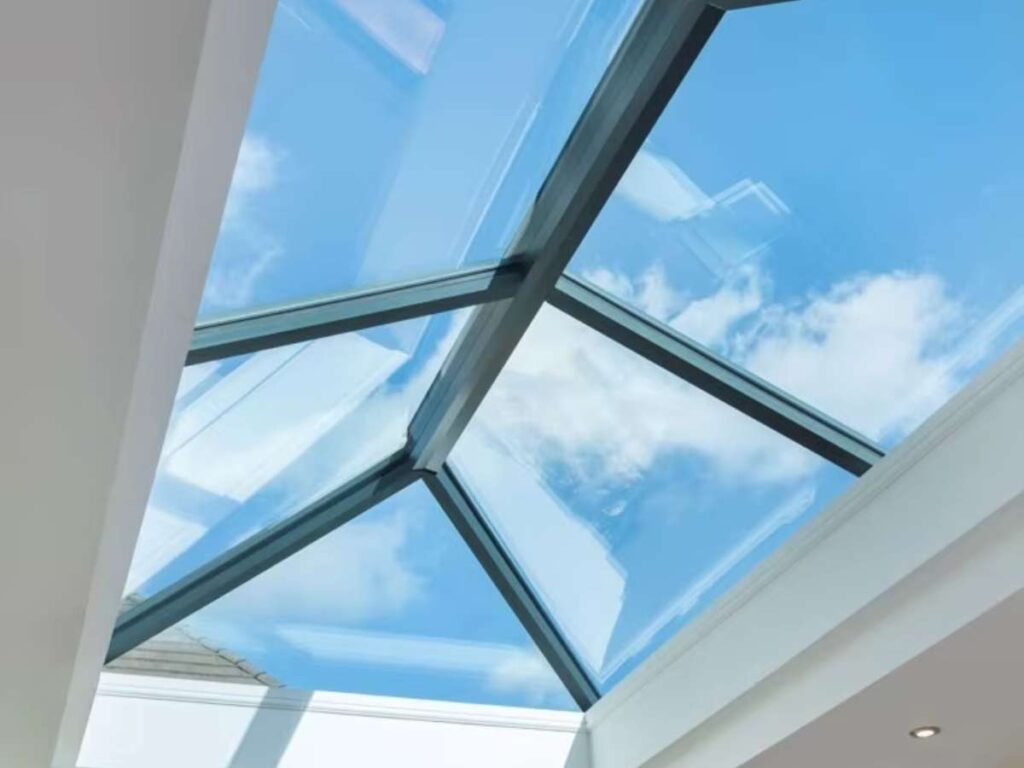
Final Tips Before You Choose the Right Window for Your Property
Window choices might seem small at first, but they affect how your whole property feels and functions. From airflow to light to maintenance, each window type brings something different. Taking a few moments to plan room by room can save you time, money, and guest complaints later on.
- Think About the Purpose of Each Room: Bathrooms, corridors, and guest rooms all need different features. A single-hung window might work in one space, while an awning style is better in another.
- Balance View and Function: Bay and picture windows look impressive but are best used in rooms with scenic views.
- Match to Local Climate: In rainy areas, hopper or awning windows keep air moving without letting water in. In warmer climates, tinted or double-glazed glass can help cut heat and glare.
- Plan for Cleaning and Repairs: Windows that tilt in or slide are easier for staff to clean, especially in multi-story hotels. That can save time and reduce wear.
- Use Budget-Friendly Styles Where Appropriate: Single-hung or sliding windows cost less and work well in standard rooms. Save premium styles for key areas like lobbies or suites.
- Mix Window Types Based on Use: Don’t rely on just one window style across the entire property. A mix of fixed, operable, and specialty windows gives you more control and flexibility.
A thoughtful window plan makes your property more guest-friendly and easier to manage. It’s the same approach Vallisco takes in all their projects blending comfort, cost, and design in every space.
Conclusion
Choosing the right window isn’t just a design task. It’s how you bring comfort, light, and airflow into every guest experience.
From fixed to skylights, now you know what works where and why it matters.
I’ve seen hotels transform just by rethinking their window strategy. You can do the same.
Which style speaks to your space?
If you’re ready to plan smarter, contact Vallisco today and let’s make your project brighter, room by room.
Dive Deeper Into Our Resources
If you’re looking for more insights, we’ve put together a list of helpful articles that you might enjoy:
Still haven’t found what you’re looking for? Don’t hesitate to contact us. We’re available around the clock to assist you.



